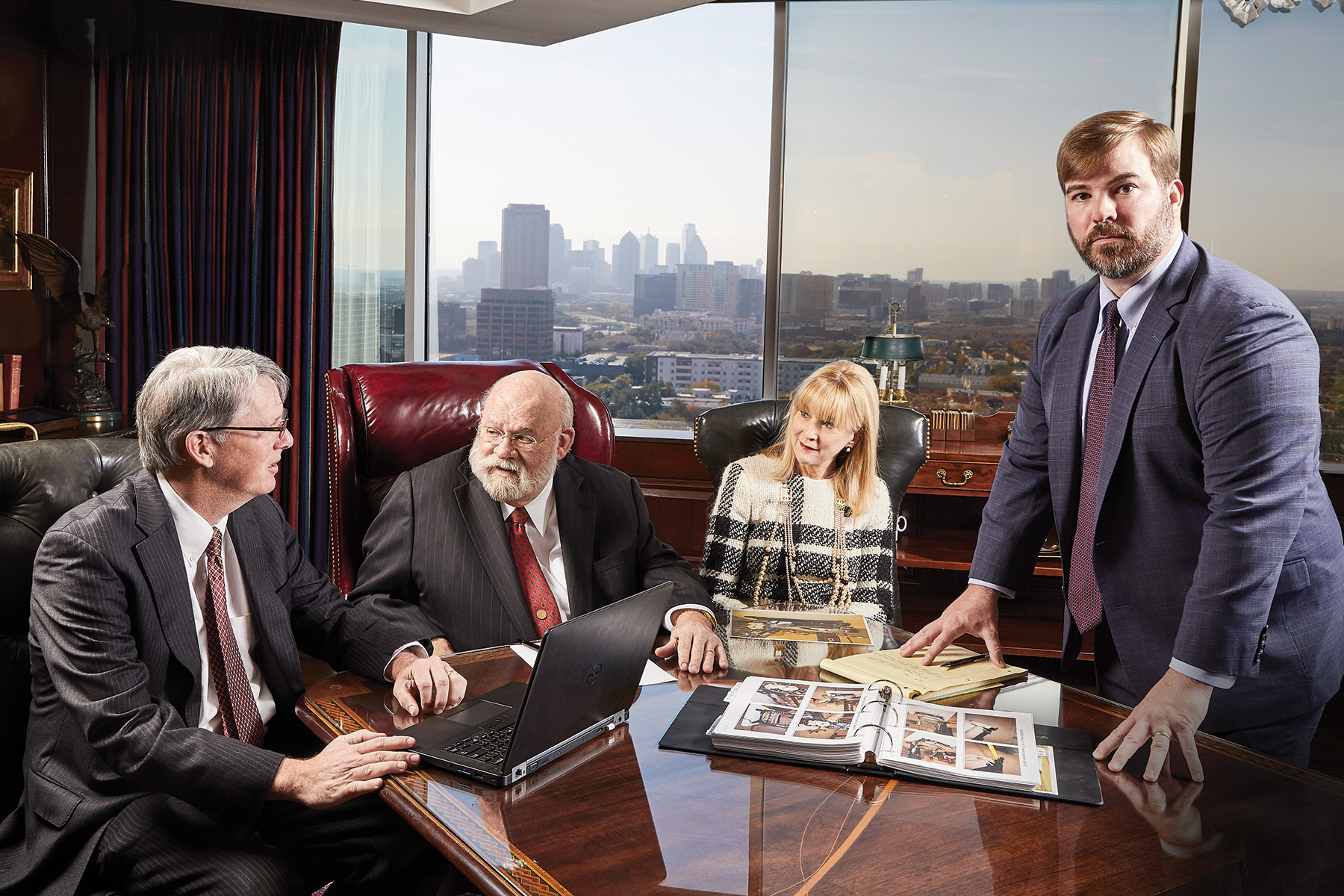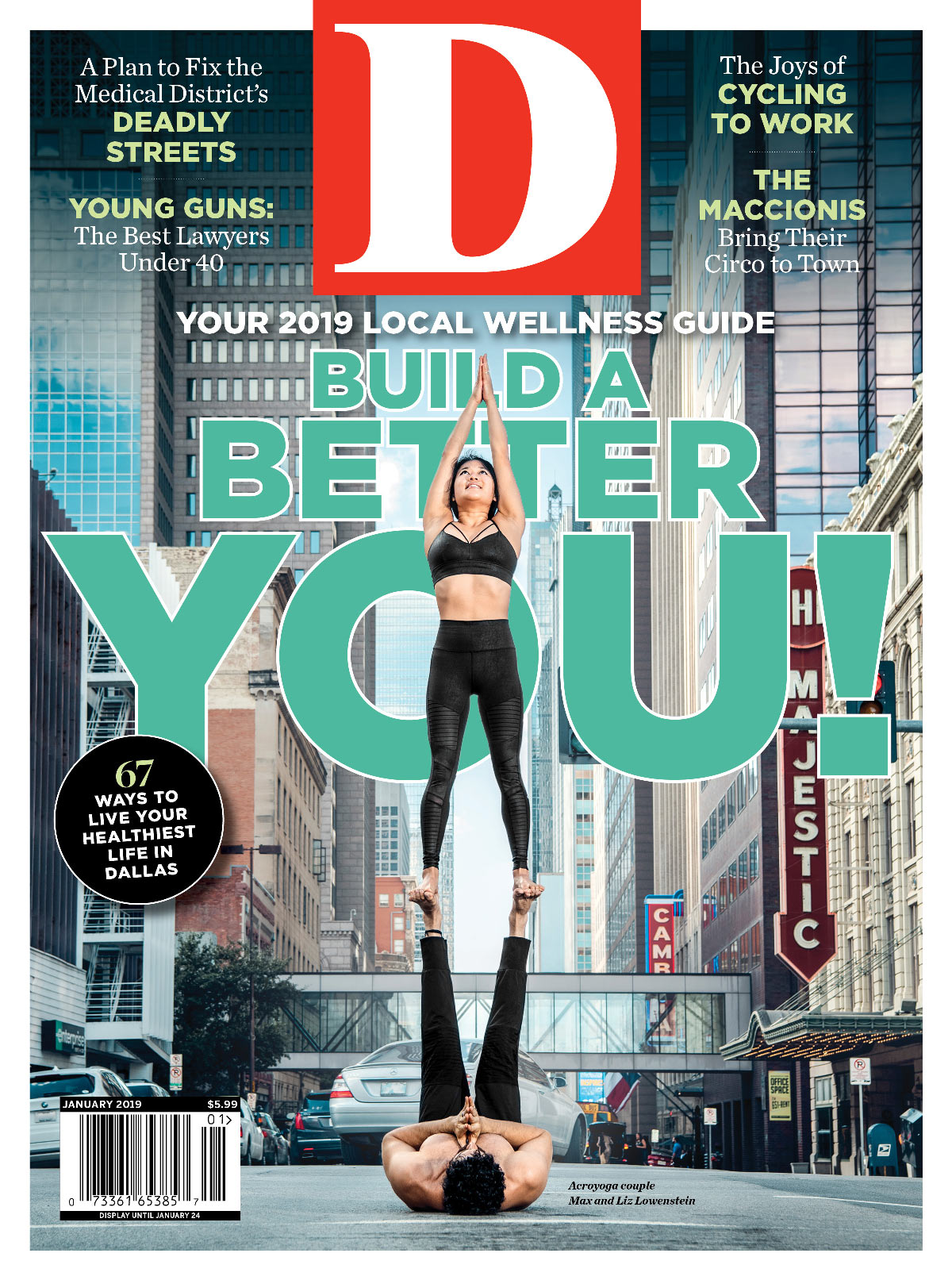Inertia can be dangerous. when a speeding car comes to a sudden stop, its passengers continue their travel forward, toward the windshield, reason for the inventions of seat belts and air bags.
The same inertial properties work against passengers when their car is stationary. When a car is struck from behind and accelerates suddenly, its seats slam into the occupants. If those seats give way, if they’re engineered to give way, the bodies sitting in them can move in surprising ways.
That’s what happened to Kristi and Ben Reavis on a September Sunday in 2016. They were leaving Mockingbird Station, where they’d gone after church because 5-year-old Emily’s footwear was giving her a blister. The girls went to The Gap. The boys, Ben and 3-year-old Owen, headed for a taco spot, where Emily soon came skipping through in brand-new sparkly blue shoes.
After lunch, the parents buckled the kids into the back seat of the Lexus that Kristi had convinced Ben to buy a decade earlier. Emily sat in a booster seat, Owen in a traditional car seat, both facing forward. Ben turned southbound on Central and stayed in the right lane so they could exit on Woodall Rodgers toward downtown, home. But traffic stopped, and Ben had to abruptly brake to avoid hitting the car in front of them. Ben and Kristi gave each other a look like That was close. And then, without so much as a warning sound of screeching tires, their lives changed forever.
Testifying in court last summer, Ben described a nightmare. After the impact, he and Kristi discovered their kids unconscious behind them, the back window of the Lexus blown out. They feared the kids weren’t breathing. Each parent gingerly held a child. Ambulances arrived. A paramedic called out, “We need to go now!” At Children’s Medical Center, Owen was wheeled by, and Ben thought he saw on his 3-year-old son’s pillow a piece of his brain. He was sure the boy was gone. A neurosurgeon arrived, as did a social worker and chaplain. It was surgery for Owen, a procedure for Emily. Medically induced comas. A month in the hospital. Another month in a room at a Children’s Health facility, Ben and Kristi sleeping nearby on an air mattress. In the end: both kids suffered traumatic brain injuries. Permanent damage.
Somewhere in there, a few days after the accident, a young lawyer named Chip Brooker walked into the Reavises’ hospital room and found Ben and Kristi hovering over their children, Emily and Owen sharing a bed.
Toyota, which owns Lexus, said in an emailed statement that the company remains “confident that the injuries sustained were the result of factors specific to this very severe collision, not a defect in the design or manufacturing of the 2002 Lexus ES300.”
Brooker—a Carolina kid who married a Texas girl who’s now a partner at a firm in town—got his J.D. from SMU’s Dedman School of Law. He worked most of his first professional decade at Haynes and Boone, trying business cases with well-respected lawyers like George Bramblett and David McAtee, the latter of whom now serves as general counsel at AT&T. Brooker repped corporate clients like American Airlines, ExxonMobil, and what was then called Baylor Health Care System. But when he was passed over the first year he was eligible to make partner, Brooker took a step back to reevaluate. At lunch one day, a friend told him that the moment you stop envying your boss’s job is the moment to move on. Although he explored other avenues, Brooker eventually joined The Law Offices of Frank L. Branson, founded by the legendary eponymous plaintiffs’ lawyer. Branson’s offer would allow him to do the sort of work he felt he was meant to do. He was just 33 years old when he signed on in 2013, but he pledged then that he’d open his own firm by the time he hit 40.
At the hospital, the Reavises sought answers. From a short conversation, Brooker figured this was a seatback case. Ben had a bump on his head and Kristi had a cut on hers, but neither could explain why. The injuries to their children seemed excessive considering air bags never deployed and every other person involved—seven of them—had walked away from the crash.
Branson had handled car defect cases before, and with a couple of upstanding clients—Ben an architect, Kristi works in finance—he figured they’d have a shot at getting a sizable judgment. But the team of attorneys—Branson, Brooker, Eric Stahl, and Debbie Dudley Branson, who is Frank’s wife—wouldn’t know what they had on their hands until they started to investigate.
Seatback cases take time to develop. The firm engaged a whole range of experts—doctors, engineers, biomechanists, reconstructionists. They ordered crash tests. They determined that as the Lexus was struck from behind, the force reclined the front seats, the parents’ bodies slid toward the back seat, and they knocked heads with their children. Their securely fastened seat belts were irrelevant. Owen’s head evidently had been turned to his left, facing his sister, and was struck above his right ear. Emily was hit above her right eye socket. Both kids’ skulls fractured.
[giflike_video id=”1″ /]
Piecing together their case, Branson’s team sought to show a jury that the automotive industry is well-aware that seatback failure can be caused by high-speed, rear-end impact. In 1992, 60 Minutes ran a story about the implications, giving voice to a couple of drivers who’d become paralyzed from the impact of their heads colliding with the back seat. The Branson team pointed to that coverage. To protect against whiplash, the seat backs are made to “yield” during lower-speed collisions. But, says Brooker, who delivered the opening statement in court, protecting against whiplash comes at the expense of total seatback failure in higher-speed collisions.
Toyota, which owns Lexus, declined an interview request for this story but said in an emailed statement that the company remains “confident that the injuries sustained were the result of factors specific to this very severe collision, not a defect in the design or manufacturing of the 2002 Lexus ES300.”
A key part of Toyota’s strategy—as the words “very severe” signal—was arguing that accidents like the Reavises’ are rare, and to pin the blame on the driver of the other car. Brooker says the team batted those points away by introducing data that showed just how often these sorts of accidents occur; the driver who hit the Reavises was traveling at about 45 mph, experts determined.
And then there’s the defense that car companies have to look at the safety of the entire vehicle. “They say it’s a holistic approach and they have to balance the various risks,” Brooker says. The auto industry’s “conscious decision” has been to prioritize whiplash over catastrophic seatback failures. “That is the decision that Toyota made and that’s the decision the jury held them accountable for,” he says.
Federal standards for seatback strength have been in place since 1968 and have withstood, with help from the automaker lobby, the various waves of publicity and support for changing them. It’s the National Highway Traffic Safety Administration that’s ultimately responsible for the rules, and major verdicts could help turn the tide. In 2016, in San Antonio, a jury awarded a family $124 million in a similar case against Audi, in which a 7-year-old was left with serious brain damage. And in August, in a state courtroom in Dallas, after testimony that stretched for two weeks, a jury awarded the Reavises $242 million, the second-largest personal-injury verdict in Dallas County history, according to Brooker. (A judge in October reduced the total award to $209 million.)
“When the jury comes back, good or bad, we try to keep a poker face in the courtroom,” Brooker says. “But there was definitely some—we felt like justice was being done.”
The jury found that defects were the reason for the kids’ injuries, that the seats were “unreasonably dangerous,” and that Toyota had failed to notify customers of those dangers. In assigning $144 million in punitive damages, the jury said Toyota’s actions were grossly negligent. The other driver received just 5 percent of the responsibility.
It was a big moment for Brooker. It’s also a legacy the 39-year-old can leave behind. With the new year underway, Brooker will branch out to start his own firm. “I’m keeping a promise to myself,” he says. He has aspirations to be known as one of the best trial lawyers in town, filling the shoes of his mentors. As he pursues clients, having such a large verdict attached to his name won’t hurt.
Kristi and Ben Reavis, who declined an interview for this story but submitted a written statement, say they want responsive change to the auto industry’s continued neglect of the dangers of these kinds of crashes. “Our children’s lives and health are permanently impaired,” reads the couple’s statement. “Our family is frayed and exhausted. Optimism for recovery has been replaced by the reality of life altered by traumatic brain injury.” They’re grateful, however, that the jury chose to send a message to one of the biggest corporations in North Texas, and to the auto industry at large.
“The system worked,” Branson says. “I’m not critical of Toyota’s lawyers; they were extremely thorough. But the facts were on our side, and that always helps. Credible clients and good facts.”






